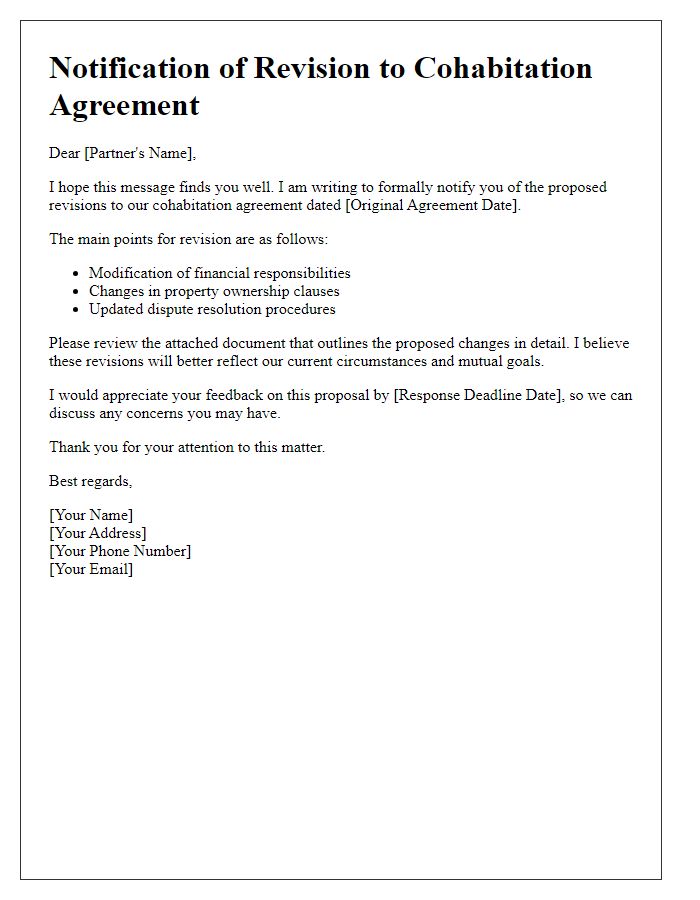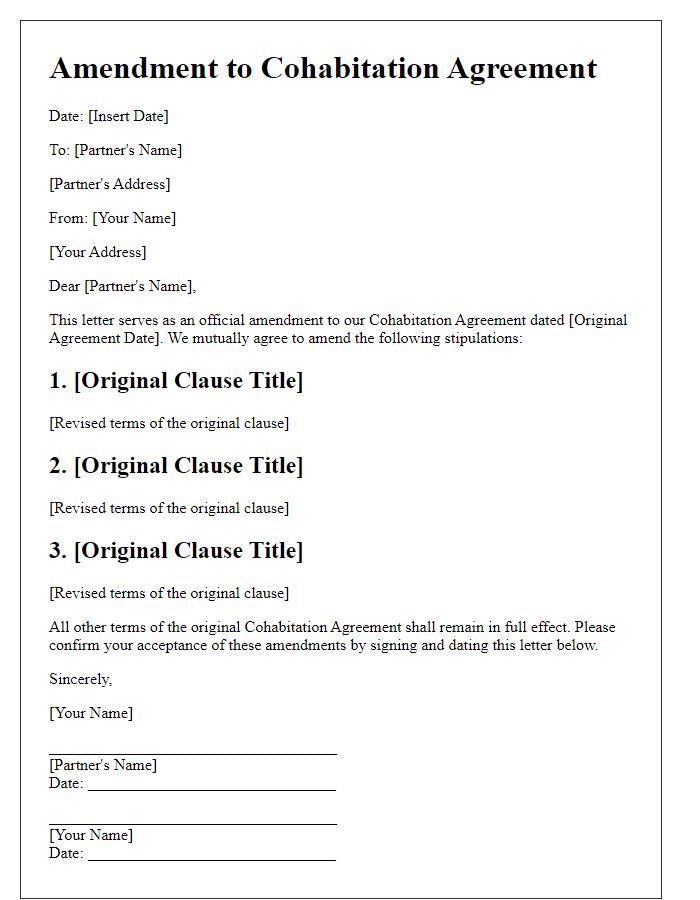Are you considering adjustments to your cohabitation agreement? Changes in circumstances or new developments in your relationship can often prompt a reevaluation of terms that suit both partners better. Open communication and proactive planning are key to ensuring that both parties feel secure and understood in their shared living situation. Ready to dive deeper into crafting a tailored cohabitation agreement? Let's explore the important aspects together!

Purpose of Amendment
A cohabitation agreement, designed for couples living together, outlines rights and responsibilities. Amendments may arise due to changes in circumstances, such as financial status, property ownership, or the addition of family members. For instance, if one partner purchases a home in Los Angeles, the agreement must reflect ownership details, mortgage responsibilities, and maintenance responsibilities. Additionally, adjustments to financial arrangements, such as contributions to household expenses or savings allocations, may be necessary for equitable partnership. Clear documentation of these changes ensures both parties understand their evolving commitments and protects their interests. Regular reviews of the agreement facilitate ongoing communication, reducing potential conflicts.
Parties Involved
In a cohabitation agreement, the parties involved typically include two individuals who choose to live together in a domestic partnership, often referred to as cohabitants. These individuals may share a residence (address details such as street name and city) and have mutual obligations concerning property, finances, and day-to-day living arrangements. Key elements may include both parties' names (including any middle initials or suffixes), defined roles in the partnership, such as a primary tenant versus a guest, and their respective rights regarding shared assets and liabilities. Important considerations also include duration of cohabitation, contribution to household expenses, and procedures for resolving potential disputes. The agreement may need adjustments to reflect changes in circumstances, such as the birth of children, job loss, or changes in income, underscoring the importance of periodic reviews and updates to maintain clarity and fairness in the relationship.
Description of Adjustments
Adjustments to a cohabitation agreement can encompass various aspects of shared living arrangements. Financial contributions may be redefined, such as specifying percentages for rent (e.g., 60% for one partner and 40% for the other) to reflect income disparities. Responsibilities for household chores (e.g., cleaning, cooking) can be outlined more clearly with designated duties. Personal property rights may be adjusted to reflect acquired assets during the cohabitation period, ensuring fairness in case of separation. Conflict resolution protocols might be established, delineating steps for addressing disagreements effectively. These modifications aim to create a more harmonious living environment and protect both parties' interests in the long term.
Effective Date
Cohabitation agreements require careful consideration of adjustments to reflect changes in circumstances. The effective date marks the moment when any amendments officially come into force, providing clarity for all parties involved. This date should be clearly stated within the document to ensure mutual understanding. For example, if two partners residing in Seattle, Washington decide to revise their cohabitation agreement on March 15, 2023, the effective date can either be set as that date or another chosen later date, ensuring legal consistency. It's crucial for both individuals to acknowledge the implications of these changes, particularly in regards to shared responsibilities and asset management. Documentation of the effective date helps prevent misunderstandings and provides a clear timeline for implementing new terms.
Signatures and Notarization
A comprehensive cohabitation agreement outlines the rights and responsibilities of partners living together, ensuring clarity in decision-making and asset management. Essential components include sections on property ownership, financial obligations, and dispute resolution. Signatures from both parties solidify the agreement's validity, while notarization by a licensed notary public, such as those commonly found in law offices or banks, adds an extra layer of legal authority, confirming the identities of the parties involved and the voluntary nature of their consent. Proper execution of the document fosters a sense of security and mutual understanding, reinforcing the partners' commitment to their shared living arrangement.













Comments